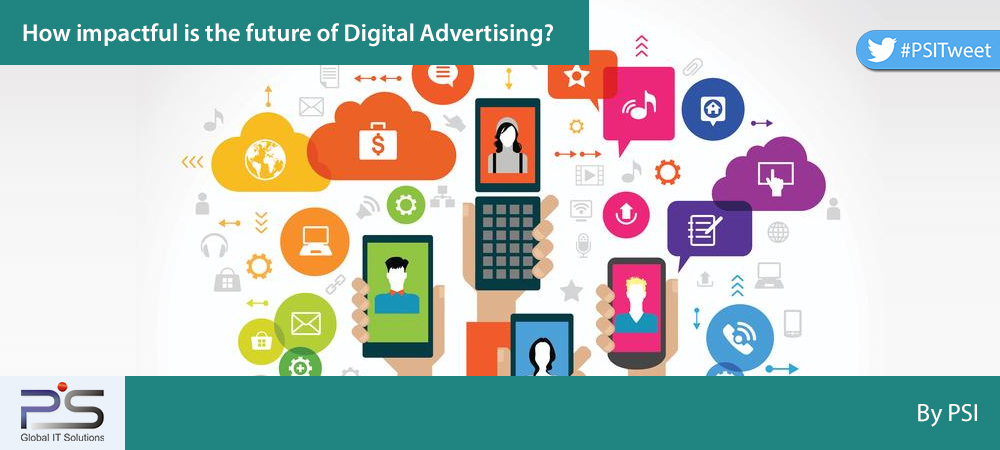
Research states that online video is coming up as a prominent advertising medium with a growth rate of 34% last year and is estimated to grow further. Key reasons are rising consumption of multimedia content on smartphones accelerated by faster connection via 4G.
Customers are presumed as an aggregate of visitors arriving at a store (or online portal) for enquiry, purchase or after sales services. Until recently, targeting was limited to the available set of content, behaviour, geography related information. But now the focus has moved to understand individual customer as an entity.
Organisations are using real time algorithms to target customer specific content through advertising. Researches across domains point out that the average CTR (Click-through rate) is far below 0.1%. So, this is less than 1 click per 1000 impressions. This implies about 99.9% of digital ads actually go unnoticed/unclicked.
In an ideal situation, an ad is to be customised for each and every customer/consumer with respect to the individual’s perspective of the interaction stage in real time. The real time bidding allows capturing, analysing and determining the viewers’ dealing with the website and serving with personalised communication. Through personalised targeting and distilling the information collected through customer interactions, organisations can create distinctive experiences.
Delivering customised advertising
Collaborating the data gathered through different sources about a customer helps generate relevant adapted ads to result in desired customer behaviour.
Transactional advertising includes selling of the product through the ad without redirecting the customer to a different web page. There is no need to browse through different web pages and do the transaction. They may appear like a normal page, but are highly interactive and can be utilised on social platforms. They serve the underlying desire of customers to buy the product. If the product falls in the consideration set of the customer it is more likely that customers will purchase it while interacting with transactional ads.
Dynamic Creative Optimization another aspect that allows splitting ads into pieces to create customised versions for different audiences based on unique user attributes. The customer data is fed into the system which acts as criteria for creative split and connects the ad objects accordingly. This can be used in various ad formats, be it banners, videos or other links. A major benefit of using DCO is that the marketers can create themselves customized ads, without bothering the creative team to create different ads everytime.
The modern age smartphone users browse information through the mobile app rather than web browsers. This creates immense potential for the advertisers to promote content through the apps. The ads are blended within the apps to create relevant user experience. The In-App Advertising, the target audience is receptive to the ads because the content is formatted based his preferences and behavioural patterns.
Another pattern to be adapted is Native Advertising where the ads are such designed and placed in the content that visitors believe it is a part of the page. The idea is to blur the difference between content & ad.
The major questions an organisation requires to ponder over for their digital plans are:
- Does the organisation have enough data about their customers to create a digital identity for targeted ads?
- Can the digital systems create tailored experiences for the digital identities?
- How to engage with the customers with digitally relevant content?
- Is the organisation ready to invest in this transformation?
Image Courtesy: bit.ly/1UM99sNResearch states that online video is coming up as a prominent advertising medium with a growth rate of 34% last year and is estimated to grow further. Key reasons are rising consumption of multimedia content on smartphones accelerated by faster connection via 4G.
Customers are presumed as an aggregate of visitors arriving at a store (or online portal) for enquiry, purchase or after sales services. Until recently, targeting was limited to the available set of content, behaviour, geography related information. But now the focus has moved to understand individual customer as an entity.
Organisations are using real time algorithms to target customer specific content through advertising. Researches across domains point out that the average CTR (Click-through rate) is far below 0.1%. So, this is less than 1 click per 1000 impressions. This implies about 99.9% of digital ads actually go unnoticed/unclicked.
In an ideal situation, an ad is to be customised for each and every customer/consumer with respect to the individual’s perspective of the interaction stage in real time. The real time bidding allows capturing, analysing and determining the viewers’ dealing with the website and serving with personalised communication. Through personalised targeting and distilling the information collected through customer interactions, organisations can create distinctive experiences.
Delivering customised advertising
Collaborating the data gathered through different sources about a customer helps generate relevant adapted ads to result in desired customer behaviour.
Transactional advertising includes selling of the product through the ad without redirecting the customer to a different web page. There is no need to browse through different web pages and do the transaction. They may appear like a normal page, but are highly interactive and can be utilised on social platforms. They serve the underlying desire of customers to buy the product. If the product falls in the consideration set of the customer it is more likely that customers will purchase it while interacting with transactional ads.
Dynamic Creative Optimization another aspect that allows splitting ads into pieces to create customised versions for different audiences based on unique user attributes. The customer data is fed into the system which acts as criteria for creative split and connects the ad objects accordingly. This can be used in various ad formats, be it banners, videos or other links. A major benefit of using DCO is that the marketers can create themselves customized ads, without bothering the creative team to create different ads everytime.
The modern age smartphone users browse information through the mobile app rather than web browsers. This creates immense potential for the advertisers to promote content through the apps. The ads are blended within the apps to create relevant user experience. The In-App Advertising, the target audience is receptive to the ads because the content is formatted based his preferences and behavioural patterns.
Another pattern to be adapted is Native Advertising where the ads are such designed and placed in the content that visitors believe it is a part of the page. The idea is to blur the difference between content & ad.
The major questions an organisation requires to ponder over for their digital plans are:
- Does the organisation have enough data about their customers to create a digital identity for targeted ads?
- Can the digital systems create tailored experiences for the digital identities?
- How to engage with the customers with digitally relevant content?
- Is the organisation ready to invest in this transformation?
Image Courtesy: bit.ly/1UM99sN[:]








